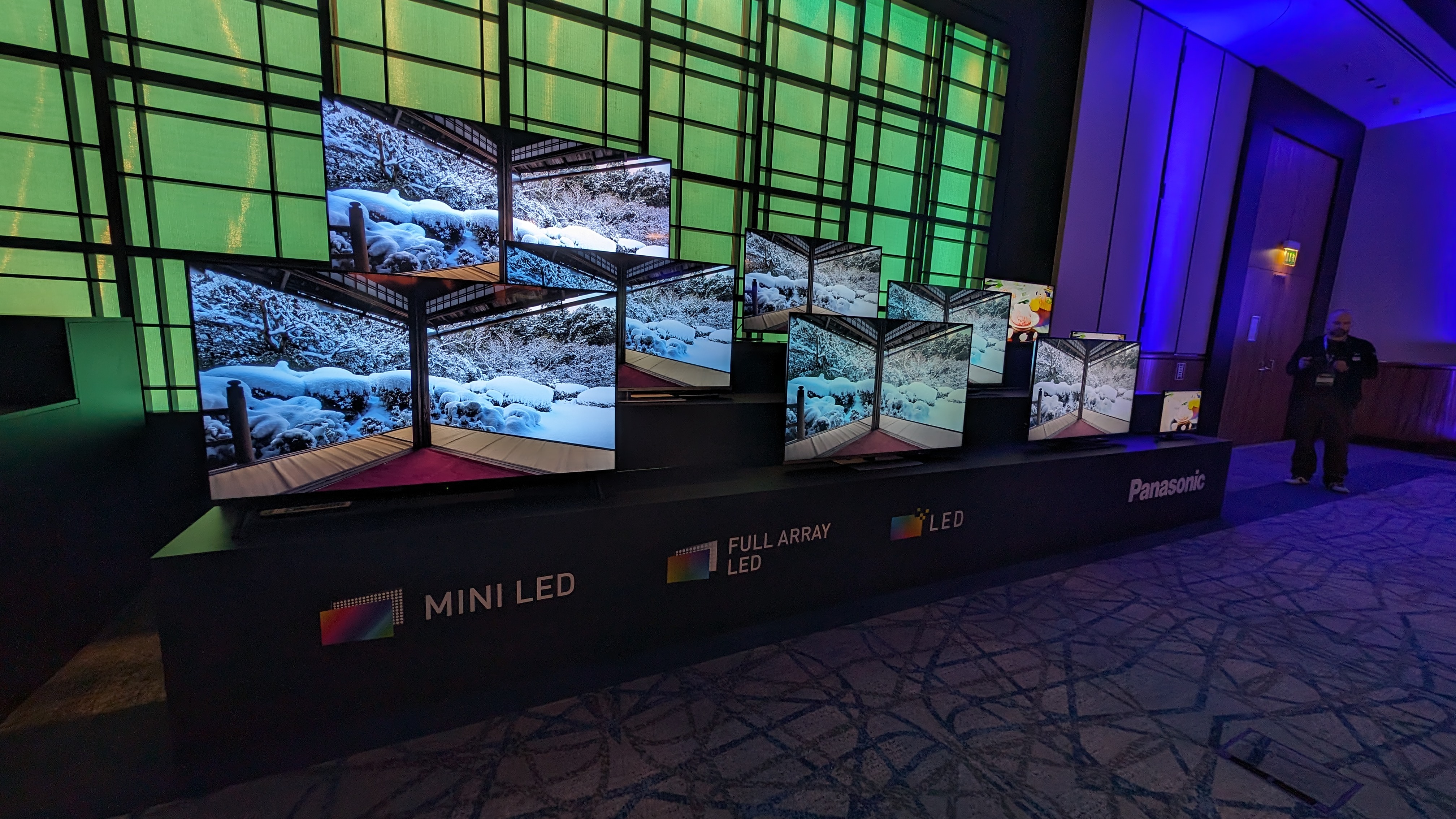
This week I jetted off to Dusseldorf to check out Panasonic’s latest line of TVs. One highlight was seeing its latest step-down from flagship OLED, the Panasonic Z90A in the flesh (plastic) for the first time..
But in the sea of top end OLEDs, it was a demo focussed on a growing, but often less headline grabbing TV technology known as Mini LED, that really stood out.
Mini LED is a fast growing TV technology used in many mid-range and some surprisingly affordable sets, like the Award winning TCL 845K we gave five-stars to last year.
It aims to improve basic LCD performance by using smaller LEDs, which are arranged into a wider array of dimming zones, giving the TV more granular control over which elements emit light at any given time. When done right, it can offer massive performance gains on standard LCD sets, based on our latest testing.
At the top end of the market it is often not given the same credence as OLED, which is believed to be better by most home cinema enthusiasts due to its ability to create perfect, inky blacks that Mini LED sets can’t match.
This is particularly true in today’s world where OLED TVs are also gradually overcoming their lower max brightness levels.
This is thanks to the appearance of next generation Micro Lens Array (MLA) and QD-OLED screen technologies. These have both helped TVs like the MLA-equipped Panasonic MZ2000 offer significantly higher peak brightness levels than older basic OLEDs when we tested them last year.
Panasonic’s showcase was important as it reminded me that, while it's easy for enthusiasts to focus on OLED, Mini LED also has massive room for growth and could challenge the current TV panel top dog some day.
The epiphany occurred during a demo where Panasonic showed a series of test videos and demos on its new W95A and previous generation MZ950 Mini LED sets.
At a hardware level the two look fairly similar, both featuring a 4K Mini LED panel, and being available in 75, 65 and 55-inch sizes.
The big difference is that the W95A features the same flagship HCX Pro AI Processor MK II seen on the flagship Panasonic Z95A, is powered by Amazon Fire OS, has an atypically high 144Hz refresh rate for gamers, and enhanced Filmmaker Mode.
Seeing the two head-to-head in the dark demo room, the differences between them was impressively clear.

The first demo was of a panning shot over a classic car, which showcased a few key differences. For starters the W95A’s black levels were noticeably deeper, but still full of wonderful amounts of shadow detail. This meant that subtle reflections and colour streaks in black sections held much more lustre on the W95A than the older model, which had a slightly grey tone by comparison.
The transition between bright reflections into shadow also looked much more natural on the W95A, with it offering a smooth transition between light and dark sections, where the MZ950 had some banding issues.
The performance leap continued in our second demo, which was designed to show off improvements to the W95A’s colour accuracy. It showcased a short panning shot of a model in a vibrant bright yellow room. Comparing the results on the two there was more detail and contrast, particularly on skin tones, on the W95A.
All-in-all the W95A just looked better during the demo sessions.

These are not final verdicts on the W95A. We weren’t in control of the demo conditions and weren’t able to see how it performed with movies and our usual suite of test scenes. Panasonic also hasn’t shared key details likes price and whether it will launch the W95A in key markets, including the UK.
But I’d argue the difference I saw is important nonetheless, especially if Panasonic has genuinely achieved these results after only one generational leap.
If it manages to deliver the same results in our viewing rooms when/if we get it in for review then this will be a serious achievement and strong sign of quite how much potential Mini LED has, even at the top end of the TV market. It would also explain why so many of the TV manufacturers we speak to seem to be so excited about Mini LED at the moment.
MORE:
These are the best 65-inch TVs we’ve reviewed
We rate the best OLED TVs
Our picks of the best gaming TVs






